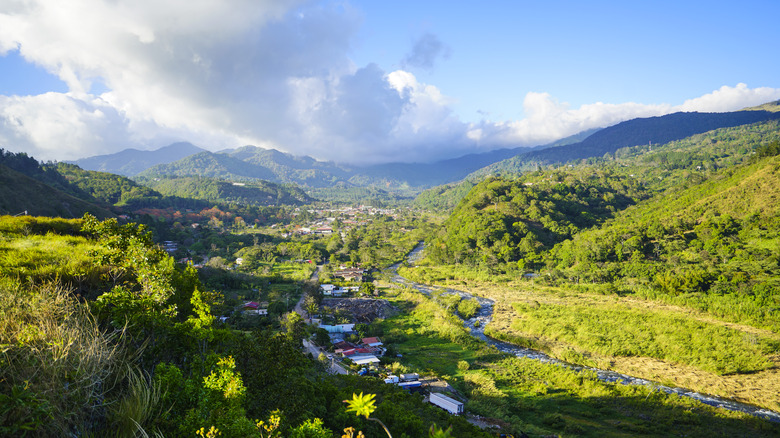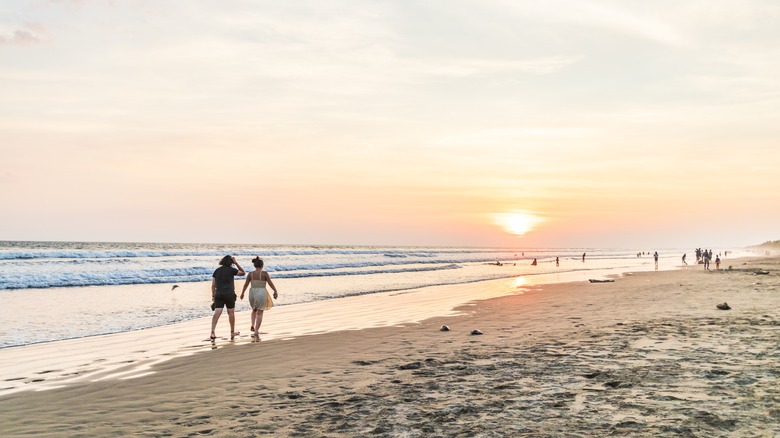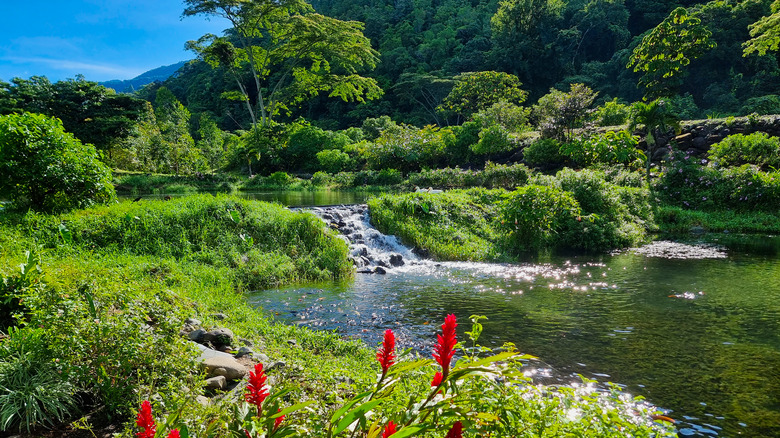Panama's Tallest Peak Is In A Western Province With Roaring Waterfalls, Green Scenery, And Sandy Beaches
Panama City gets most of the attention from international travelers. There's no denying that the city's historic center is full of charm, or that the Panama Canal and the luxurious enclave that borders it are impressive. That said, travelers who want to experience the wilder side of the country should venture into the diverse region of Chiriquí. This region is located in the northwest and offers a long stretch of Pacific coastline, waterfalls, hot springs, and countless hiking trails. It's also home to Volcán Barú, whose 11,400 feet earn it the title of highest point in the nation.
Boquete, a beautiful town in the highlands, is Chiriquí's center of tourism, especially for intrepid travelers looking for mountain adventures near Volcán Barú. The most coveted trail is the roughly 12-hour round-trip one that takes you to the peak of the dormant volcano. Many people start around midnight so they can make it to the summit in time for the sunrise. On clear days, lucky hikers are treated to spectacular views of both the Atlantic and the Pacific Ocean. But even on cloudy days, the experience is guaranteed to be amazing. Alternatively, you can do a four-wheel drive tour up a very bumpy road to the peak.
Other things to do in this mountainous part of Chiriquí include ziplining, white water rafting, and visiting coffee farms. Several farms provide the chance to try the famous Geisha coffee, one of the most expensive in the entire world.
Enjoying the wonders of the Pacific Ocean in Chiriquí
After fun adventures in the mountains, head down to the coast. There are countless beach towns scattered throughout this part of Panama's Pacific coast. Most of them are small and laid-back, providing plenty of opportunities to see the local culture and avoid all-inclusive resorts that hog the sand. The Gulf of Chiriquí National Marine Park might just be the most magical place in this area. As a protected space, it's home to coral reefs, sea turtles, monkeys, manta rays, dolphins, sharks, and many other species. Whale-watching tours bring wildlife lovers to the park, particularly between July and October, when there's a chance to see majestic humpback whales. Many of these tours leave from the town of Boca Chica, which is near the popular Boca Brava Island. If you head to the island, you'll have the chance to see howler monkeys or do snorkeling tours when you're not lying on the sand.
Playa las Lajas is another popular spot. Stretching over 7.5 miles of sand, the beach calls Panamanians from other provinces looking for a seaside escape. Despite its popularity with locals, the beach remains somewhat underdeveloped. You won't find mega resorts, shiny skyscrapers, or food chains around. Instead, dig into delicious local food, go diving, or nap on the beach. More active travelers can plan to take surfing lessons or simply catch some waves if they're already skilled in the sport. It's also possible to kayak, paddleboard, or windsurf.
Planning a wonderful escape to Chiriquí
Although Chiriquí is a dream destination, it remains relatively unknown because of its remoteness. The province requires travelers to make extra time just to reach it, but the effort is definitely worth it. The fastest way to get here is to fly into Panama City and then take an hour-and-fifteen-minute flight to David, the country's second-largest city. David is generally seen as a gateway to the province's main attractions. You'll be able to drive or take a bus to both Boca Chica and Boquete in around an hour. Travelers who prefer to travel by land in order to reduce their emissions can do a seven-hour journey by car or public transit from the capital to David. This option is great for people interested in slow travel, as it allows you to drive along the Pan-American Highway, the world's largest continuous road.
Most travelers will want to avoid the country's lengthy rainy season, which lasts from May to December, with October seeing the most rainfall. Even though the beginning and end of the season are usually doable, you'll want to be prepared, especially if you're planning on hiking. Bring a rain jacket and waterproof hiking boots. A packable rain poncho will be a lifesaver when there's heavy downpour. If you're traveling for whales, then go during the peak months, even if it's rainy. Boats go out in light rain, so you might still have a chance to see these large mammals in the wild.


